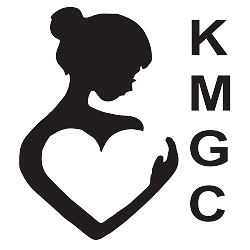Delivery by Cesarean Section
Delivery by Cesarean Section
A Cesarean section (C-section) is a surgical procedure used to deliver a baby through incisions made
in the mother's abdomen and uterus. This procedure may be planned in advance or performed as an
emergency if complications arise during labor.
Reasons for a Cesarean Section
A C-section may be recommended for various medical reasons, including:
Previous C-section: Women who have had a previous C-section may opt for a repeat
procedure, although vaginal birth after cesarean (VBAC) is also an option for some.
Placenta Previa: When the placenta covers the cervix, a C-section is necessary to
avoid severe bleeding during delivery.
Fetal Distress: If the baby is not getting enough oxygen, a C-section may be the
safest way to deliver the baby quickly.
Breech Position: When the baby is positioned feet or buttocks first, a C-section is
often safer than a vaginal delivery.
Multiple Pregnancy: Twins or other multiples may necessitate a C-section,
especially if they are not positioned head-down.
Maternal Health Conditions: Conditions such as high blood pressure, diabetes, or
infections like HIV or active genital herpes may require a C-section.
Large Baby: If the baby is very large (macrosomia), a C-section might be safer for
both mother and baby.
Obstructed Labor: If labor is not progressing (dystocia), a C-section may be
needed.
The Procedure
The steps involved in a C-section include:
Anesthesia: Most C-sections are performed under regional anesthesia (spinal or
epidural), numbing the lower half of the body while allowing the mother to remain awake. General
anesthesia may be used in emergencies.
Incision: The surgeon makes a horizontal incision in the lower abdomen, just above
the pubic hairline (bikini cut). A vertical incision may be used in some cases.
Delivery: An incision is then made in the uterus, and the baby is gently lifted
out. The umbilical cord is cut, and the baby is handed to the care team.
Closure: The uterus and abdominal incisions are closed with sutures or staples. The
entire procedure usually takes about 45 minutes to an hour.
Recovery After a Cesarean Section
Recovery from a C-section typically involves a hospital stay of 2-4 days. Full recovery can take 6-8
weeks. Key aspects of recovery include:
Pain Management: Pain relief medications are provided to manage post-surgical pain.
Incision Care: Keeping the incision clean and dry is crucial to prevent infection.
Activity Restrictions: Avoid heavy lifting, strenuous activities, and driving until
cleared by your healthcare provider.
Support: Seek help with household tasks and baby care as you recover.
Follow-Up Appointments: Attend all postnatal check-ups to ensure proper healing.
Potential Risks and Complications
Like any surgery, a C-section carries risks, including:
Infection
Blood loss
Blood clots
Adverse reactions to anesthesia
Injury to the bladder or other organs
Breathing problems for the baby if delivered before 39 weeks
Longer recovery time compared to vaginal delivery

